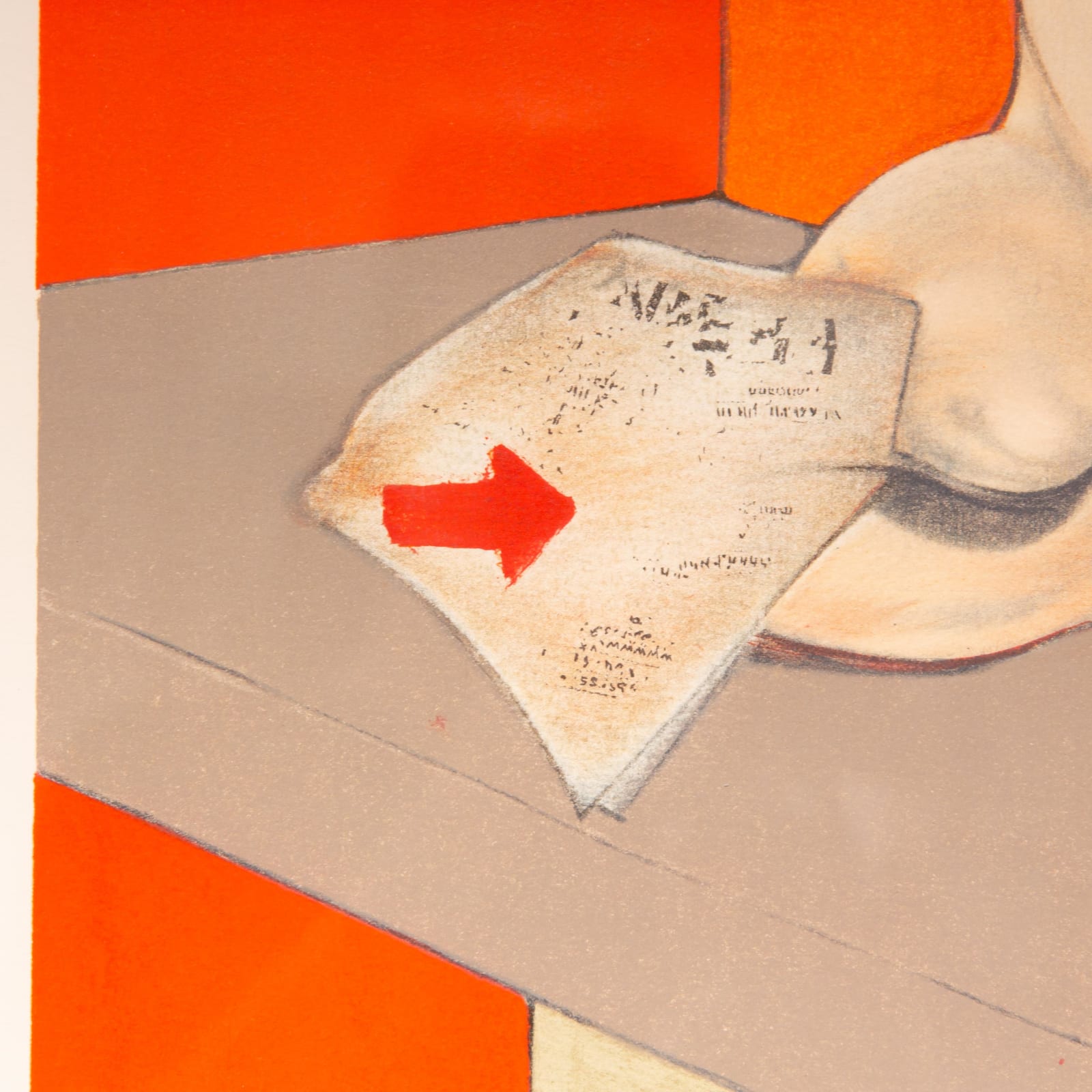Francis Bacon British, 1909-1992
Study of a Human Body after Ingres, 1984
Original lithograph on Arches watermarked paper, with full margins, Signed by the artist in pencil, lower right on recto
Edition numbered in pencil, lower left on recto
Edition numbered in pencil, lower left on recto
Image: 62 x 46.1 cm
Sheet: 88.6 x 60.5 cm
Framed: 94.2 x 76 cm
Sheet: 88.6 x 60.5 cm
Framed: 94.2 x 76 cm
© Estate of Francis Bacon
Further images
'Study of a Human Body after Ingres' was realised by Francis Bacon as a free interpretation inspired by the artist Jean Auguste Dominique Ingres. The 19th-century painter and draftsman was...
'Study of a Human Body after Ingres' was realised by Francis Bacon as a free interpretation inspired by the artist Jean Auguste Dominique Ingres. The 19th-century painter and draftsman was famous for the clarity of his lines and the meticulous depictions of surfaces often shown in all their imperfections. He was an important influence for Bacon, especially for the emphasis on studies as an integral part of the process of painting. In this artwork the curvaceous torso pays homage to Ingres’ delicate treatment of the human figure, as well as his depth use of studies in the process of painting.
The present work is a good example of Bacon’s fascination with Ingres, showing how he used the French Neo-Classical artist and his themes (e.g. the theme of Oedipus and the Sphinx) as an inspiration for his oeuvre. Similarly to Ingres, Bacon combines geometrical harmony and archaism to achieve the synthesis of the ideal human figure.
"My ideal,' Bacon told the art critic David Sylvester, 'would really be just to pick up a handful of paint and throw it at the canvas and hope that the portrait was there.'
The present work is a good example of Bacon’s fascination with Ingres, showing how he used the French Neo-Classical artist and his themes (e.g. the theme of Oedipus and the Sphinx) as an inspiration for his oeuvre. Similarly to Ingres, Bacon combines geometrical harmony and archaism to achieve the synthesis of the ideal human figure.
"My ideal,' Bacon told the art critic David Sylvester, 'would really be just to pick up a handful of paint and throw it at the canvas and hope that the portrait was there.'
Provenance
Sarah Behnke - July 2023Dellasposa Gallery - May 2023
Private Collector
Exhibitions
Bacon/Freud, Dellasposa Gallery, London, 23 May - 11 July 2023Publications
Sylvester, The Brutality of Fact, p. 16Francis Bacon: Estampes - collection Alexandre Tacou Number 18
Bruno Sabatier, Francis Bacon: The Graphic Work, no. 19.








